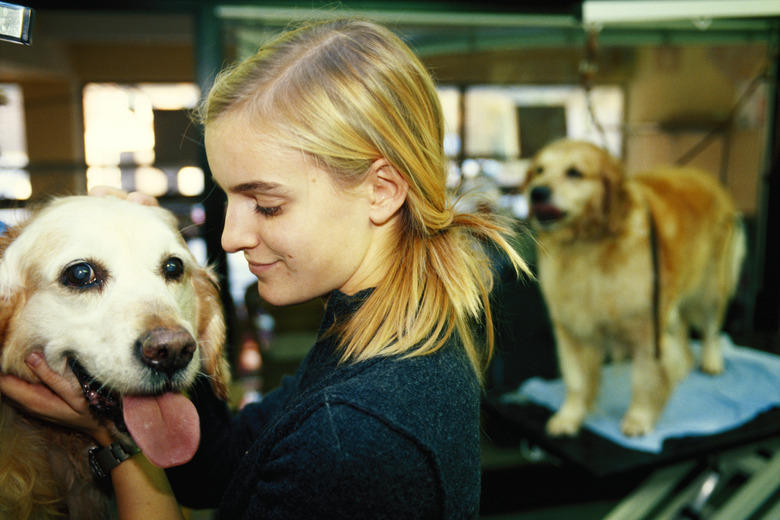How To Give A Dog A Rabies Shot At Home
Things Needed
-
Syringe
-
Refrigerated vial of rabies vaccine
-
Cotton swab
-
Alcohol or disinfectant
Warning
Your dog should have had at least one veterinary checkup prior to getting vaccinated. Sick or old dogs, or puppies, may not be suitable for vaccination or may require a different type or amount of vaccine.
Rabies is a very serious and almost always fatal brain disease spread by a virus. The virus is transmitted through a bite from an infected animal; wild animals such as foxes and raccoons can be carriers. Most countries have laws requiring that dogs receive a rabies shot by a veterinarian, and in fact, it is illegal in several countries, including the United States, for a rabies shot to be administered by anyone other than a veterinarian. However, if you have received exemptions, licenses or approval to provide a rabies shot, be sure to purchase your vaccine from a reliable distributor.
Step 1
Check with local regulations where you are. Determine if you will be violating any laws by providing the vaccination yourself. The best way to do this is to contact your local veterinarian, agricultural agency or quarantine facility. In some circumstances, for example if you live in a rural outpost where access to veterinary care is an issue, you may be granted permission to carry out the vaccination yourself or under the direction of a veterinarian.
Step 2
Obtain high quality vaccines which have been refrigerated. Vaccines must be stored and transported in the proper manner to preserve their efficacy and integrity, as well as prevent toxicity to your dog when it is given. Again, your local veterinarian is the best person to ask for the contact details of a reliable supplier. You can also obtain the vaccine from on-line pet pharmacies. If you do so, always make sure to request express and refrigerated shipping, and when the product arrives, make sure it has not been tampered with and has been maintained at the correct shipping temperature (between 2 and 7 degrees Celsius) and conditions.
Step 3
Shake the bottle of vaccine well before use.
Step 4
Draw up the entire dose of vaccine into a 1 ml syringe with a needle-gauge size that is long enough to penetrate the muscle of the dog and has a wide enough bore to allow the vaccine to travel smoothly into the muscle. The correct needle gauge depends on the dog's size, so check with your vet to find out which one suits your dog best.
Step 5
Inject the vaccine subcutaneously or intramuscularly. The best site to give the injection is in the thigh muscle or just beneath the skin between the shoulder blades (avoid the muscle in this area). Simply insert the needle into the skin about a quarter of an inch deep, or half an inch if doing an intramuscular injection, then push the syringe to expel the vaccine. Withdraw the needle and apply a cotton swab dipped in alcohol or disinfectant to stop any bleeding.
Step 6
Keep your dog in a secure area to monitor it for adverse reactions.
Always check with your veterinarian before changing your pet's diet, medication, or physical activity routines. This information is not a substitute for a vet's opinion.




